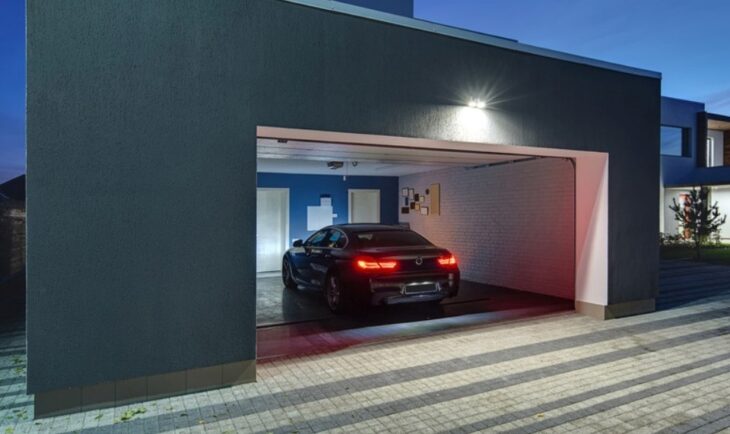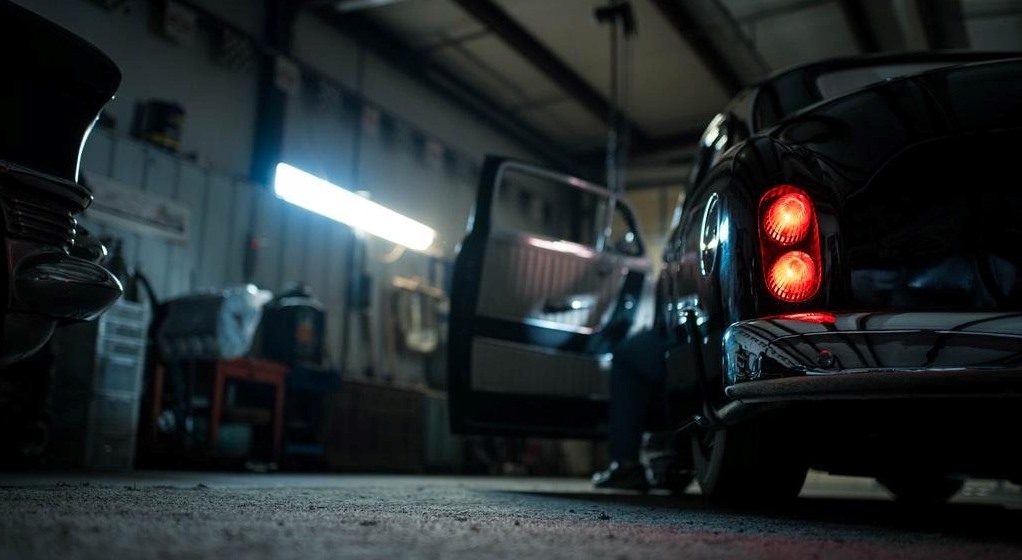Running late for work, you dash to your car and start the engine, only to realize you’ve forgotten your wallet. The temptation to leave your car running while you run back inside is strong or maybe you didn’t even think to turn it off.
So, you might be wondering if it’s risky if you accidentally left your car running in your garage for 2 minutes or a tad bit longer.
But is it worth the worry? Find out below.
Table of Contents
Is it Risky?

The short answer is yes.
Leaving a car running in an attached garage for any amount of time can be dangerous as carbon monoxide (CO) can quickly build up to dangerous levels, even in just a few minutes.
CO is a colorless, odorless gas that can cause symptoms ranging from headaches and nausea to unconsciousness and death (in extreme cases). The time it takes for CO to build up depends on several factors such as the size of the garage, the ventilation, and the amount of fuel being burned.
For example, if the garage is poorly ventilated, it could take as little as 2 to 5 minutes for CO levels to reach lethal concentrations. In a well-ventilated garage, it might take longer, but it’s still not safe to leave a car running for an extended period of time.
What is Carbon Monoxide and Its Health Effects?
Carbon monoxide (CO) is a toxic gas that is produced by the incomplete burning of fuels such as gasoline, propane, oil, and wood. CO is often referred to as the “silent killer” because it is odorless, tasteless, and colorless, making it difficult to detect without a warning device.
Now, I’m not a health expert, but you can quickly find out about CO and the risk associated with it by heading over to reputable sources like MayoClinic and CDC. I’ll still summarize the most crucial hazards below.
When inhaled, CO enters the bloodstream and interferes with the body’s ability to transport oxygen to tissues and organs. This can lead to symptoms such as headaches, dizziness, nausea, and confusion.
In severe cases, CO poisoning can lead to unconsciousness and death. Long-term exposure to low levels of CO can also have serious health effects, such as neurological damage, heart disease, and an increased risk of stroke.
Prevention Measures
The best way to protect yourself and your loved ones from CO exposure is to be proactive.
Here are a few tips:
Ventilate Your Garage

Proper ventilation is critical to ensuring the safety of your garage, especially when it comes to preventing carbon monoxide (CO) buildup.
Here are some steps you can take to ensure proper ventilation in your garage:
- Keep the garage door open: Whenever possible, keep the garage door open to allow for fresh air to circulate. This will help to dilute any CO that may be present and reduce the risk of exposure.
- Install a CO detector: Installing a CO detector in your garage can alert you to high levels of CO, so you can take action before the situation becomes dangerous. CO detectors are an inexpensive and effective way to ensure your safety. I’ve personally used this CO detector and recommend it.
- Consider installing a ventilation system: A ventilation system can help to keep your garage well-ventilated and reduce the risk of CO buildup. This may include installing an exhaust fan, a duct system, or a mechanical ventilation system.
Get a Car With a Catalytic Converter
Catalytic converters are an important component of modern cars and play a crucial role in reducing carbon monoxide (CO) emissions.
A catalytic converter is a device that converts toxic pollutants in a car’s exhaust into less harmful substances. It works by using a catalytic reaction to convert CO into carbon dioxide (CO2), which is much less toxic and easier to dissipate in the air.
The catalytic converter is an essential component of a car’s emissions control system and helps to reduce the amount of CO produced by the engine.
Modern cars are equipped with highly efficient catalytic converters that can reduce CO emissions by up to 90%. This helps to keep the air clean and reduce the risk of CO exposure for drivers and passengers.
However, it’s important to remember that the catalytic converter can only reduce CO emissions, not eliminate them entirely. This is why it’s still essential to take steps to keep your garage well-ventilated, even when you’re driving a modern car with a catalytic converter.
By combining proper ventilation with a well-functioning catalytic converter, you can help to reduce the risk of CO exposure and ensure the safety of you and your loved ones.
Be Aware of CO Symptoms and Emergency Procedures

If you suspect that you or someone else has been exposed to CO in a garage, it is crucial to evacuate the area immediately and get fresh air.
Call emergency services, such as 911, and inform them of the situation. Do not enter the garage again until the emergency services arrive and declare it safe.
Symptoms of CO poisoning can include headache, dizziness, nausea, weakness, confusion, and unconsciousness. In severe cases, CO poisoning can lead to death. If you or someone else is experiencing symptoms of CO poisoning, seek medical attention as soon as possible.
Wrap Up
The dangers of leaving a car running in an attached garage should not be underestimated.
CO can rapidly build up to lethal concentrations in a short amount of time (within just a few minutes), putting you and your loved ones at serious risk.
In case you’ve kept your car running for more than 5 minutes (and especially if it’s close to 15-30 minutes), you should not attempt to enter your garage and turn off the car’s ignition. Instead, you should attempt to ventilate the garage first, so that all the built-up CO has a chance to dissipate outside before you reach your car.
By being proactive and taking the necessary steps to protect yourself and your loved ones, you can reduce the risk of CO exposure.

